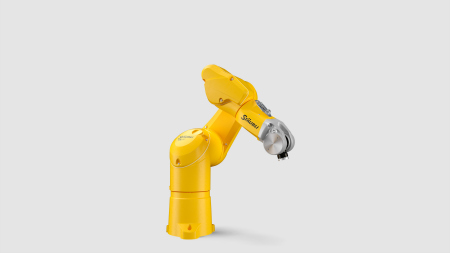- Europe
- Americas
- Asia and Middle East
- Africa and Oceania
SUCCESS STORY
Viennese Strudel from Sissi and Franz
Automation of strudel dough secondary packaging nearly failed due to space issues. Thanks to the slim design of Stäubli six-axis robots Sissi and Franz and their safety features, implementation was possible.
CUSTOMER BENEFITS
- Ultra-compact design of the packaging line
- No safety fencing thanks to Stäubli safety features
- Short cycle times due to highly dynamic robots
- Hygienic design of six-axis robot
TASK
Fully automated packaging of strudel dough
At Weinbergmaier GmbH in Vienna, Stäubli robots Sissi and Franz – so named by the employees – pack high-quality strudel dough in 1.5-second cycles. The packaging line‘s features include the ceiling-mounted pair of robots and the absence of safety fencing.
Producing pulled strudel dough is a real challenge even for the most talented amateur bakers. The delicate dough has to be kneaded thoroughly and rolled as thinly as possible.
The first recipe for what is known today as strudel was published in Vienna in 1696. Here, in the “pastry capital of the world,” strudel dough has been produced on an industrial scale for decades, which is unique worldwide. On three production lines, Weinbergmaier produces enough Toni Kaiser brand pulled strudel dough to fill a soccer field in a single day. To meet growing demand, the line producing wide strudel dough for the restaurant industry was equipped with a robot-assisted final packaging station.
SOLUTION
Stäubli six-axis robots form a high-performance duet
The compact system packs four foil-wrapped containers, each holding two 125-gram sheets of dough, in a cardboard box. Coming out of the cooler at 6°C, the packaging units reach the station, where they are correctly aligned on the conveyor belt and transported to the robot work area. Sissi, a Stäubli TX2-60 robot, picks up four of the foil-packed units at a time with its shovel-shaped gripper.
At the same time, the second Stäubli robot prepares the cardboard box. Franz, a TX2-60L, is larger than Sissi due to its longer arm. The six-axis robot is equipped with a vacuum gripper, which it uses to take a cardboard box from the magazine, run it past four glue nozzles, and press it into a negative mold. The packaging is now ready.
While Franz prepares the cardboard box for Sissi, her task is to carefully place the four containers into it. The TX2-60 has to be highly dynamic, but also work gently with the product. Sissi masters this discipline perfectly, preventing any damage to the delicate confection. The tamper-proof seal is then applied, along with an inkjet marking with the batch number and production date.
CUSTOMER USAGE
Robot safety features enable implementation without safety fencing
Project planning for the system presented a major challenge: extremely limited space was available. It initially seemed that the available space would not be sufficient. But by suspending the robots and eliminating the safety fencing, the system could be realized.
The Stäubli TX2 robot series with its innovative CS9 controller contributed significantly to feasibility. The robots meet the strict requirements of safety category SIL3-Ple, and have functions such as Safe Tool and Safe Zone, which allow a specific area to be defined and permanently monitored. The robot automatically comes to a complete stop if an obstruction is detected within the established safety zone. This innovation enables the operation of the packaging line without safety fencing.
Additionally, with their encapsulated housing, flat surfaces and internal wiring, Stäubli robots offer an excellent level of hygiene – an important argument for use in the food industry.

